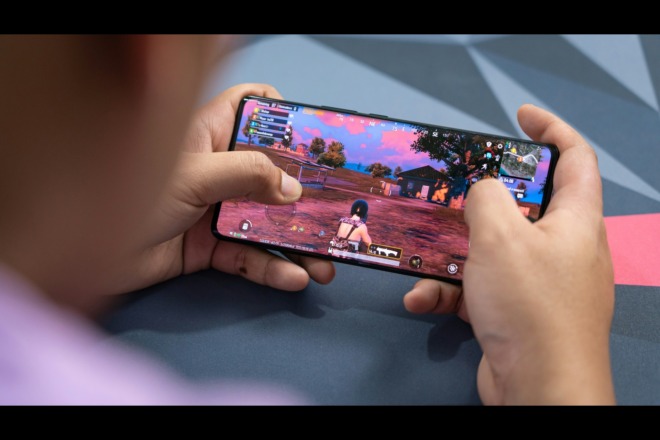Have you ever wondered how certain brands or websites select their fonts? In this chapter of “The Font Series,” we’ll look closely at Proxima Nova — a sophisticated font for sleek, modern designs that you can find just about anywhere.
Any font you choose communicates tone, invokes a response from the user, and changes the entire design appearance. Many fonts have been around for years or were inspired by older fonts created by hand ages ago. Others are relatively new, first appearing in today’s digital landscape of laptops, tablets, and smartphones.
Understanding where a font came from and how people use it in graphic design can help you know its best employment today. However, sorting through the hundreds of available fonts in any collection may only tell part of the story. We created this font series to help you determine the purpose of different choices. Some font selections are standard — such as Times New Roman, Verdana, Arial, and Georgia — while people use other typefaces less frequently.
When choosing a typeface to feature in our projects, we must carefully consider its popularity. We should also consider the reasoning behind its use and how it fits the other fonts in our guide.
Proxima Nova is a font many have not heard of before but is quite prevalent among graphic designers everywhere. In fact, you have probably seen it several times when browsing the web and didn’t realize it. Let’s study the specifics and learn more about this unique style and how you might utilize it in your own work.
The Origin of Proxima Nova
Proxima Nova was released in 2005 by designer Mark Simonson — originally Proxima Sans in 1994. It combines fonts such as Futura and Akzidenz Grotesk for a modern look with geometrical elements.
Simonson designed Proxima Nova primarily for online use. An American font designer from St. Paul, Minnesota, Simonson points to the lettering styles of the 1970s as inspiration, as his fonts often have an Art Deco appearance. Before he turned to font design, he worked as a graphic designer.
In the early days, his vision for Proxima Nova started with an ad for Star Wars: The Original Radio Drama. He tried some of the Star Wars fonts, such as ITC Avant Garde Gothic and News Gothic. However, they didn’t give him the appearance he wanted.
Finally, he pulled out a font he’d been working on. It was a mix of News Gothic and Avant Garde and he felt it was perfect for the design. As of the mid-2010s, Proxima Nova is one of the most commonly used fonts in paid commercial web design worldwide.
Mechanics of Proxima Nova
Proxima Nova comes in seven different font weights, including thin, light, regular, semibold, bold, extra-bold and black. The italics match each style, enabling you to choose from condensed or extra-condensed widths. The form combines classic sans serif faces — no feet at ends of letters — and geometric fonts. Additionally, the letters are tall and wide, but you can narrow the width by condensing.
The lack of serifs gives the font a modern look. Yet geometric elements, such as broad lines at the top of letters A and B, are reminiscent of Art Deco. Designers have used the font for everything from print to online publications, and it adapts well in different situations.
Even the thin style is bolder than its counterparts in the same category, giving Proxima Nova more weight and presence. The proportions and strokes mirror Helvetica — but the font also borrows from details in designs such as Franklin Gothic. Plus, the face has even-width dimensions.
According to his website, Simonson has modified Proxima Nova since 2005, increasing the character set from 700 to 1,453. The latest version now supports Greek, Vietnamese, Cyrillic, expanded widths and extra-wide widths, medium weights and various currency symbols.
What Does the Font Imply?
Proxima Nova is often used in subtitles. However, it also appears in titles when the user wants a serious tone that isn’t too stuffy. Because it initially appeared in a Star Wars design, it’s associated with futuristic and modern looks. The Star Wars brand is known for its tall and wide sans-serif lettering with a three-dimensional appearance. It also helps that it has a futuristic feel to it.
The shapes of the letters are simple — one of the reasons the font has become more popular over the years is its open appearance. It is friendly and works as well for a newspaper website as it does for a wedding invitation. In fact, because of its easy readability, Proxima Nova is acceptable for nearly any design you can imagine.
Using Proxima Nova shows you understand the demands of modern technology. You’re willing to embrace something new and unique without going too far into the territory of “weird.” It’s an open and warm font that invites the user to come in and stay a bit.
Where It’s Commonly Used and Found
Proxima Nova has been deployed tens of thousands of times across the web and is a top choice for digital branding. Could it be because it supports 84 languages, including Malagasy, Norwegian, Russian, and Swahili? Or maybe it’s because it’s a trendy and versatile design.
The rise in electronic devices like tablets and smartphones has demanded fonts conducive to those technologies. Generally, sans serifs have clean lines that make reading on a screen much more effortless. These typefaces also appear correctly in different resolutions. Even Google adopted a sans serif logo font — Product Sans — in 2015 to meet the changing needs of its users. For over a decade prior, Google’s logo was a serif typeface.
However, Proxima Nova maintains its popularity. Well-known websites, such as Buzzfeed and Flickr, use Proxima Nova. Also, NBC News, Wired, Mic, TikTok, and Mashable have incorporated it into their design templates.
Typically, the font appears in a headline or a blockquote, but it can also be used as body text occasionally. It is a bit weighty for the body text because of how expansive the lines are on mobile devices. Yes, the font is responsive but still has a wide weight, even when condensed.
Proxima Nova doesn’t have any notable swirls or serifs. Therefore, it’s ideal for subheadings or text you want a bit larger but don’t necessarily want the primary focus on. That said, the style works as well in print materials as online.
How You Should Use Proxima Nova
The clean, minimalist look of Proxima Nova works well at different screen resolutions, appearing clear on a smartphone or desktop. It adapts very well to billboards or pamphlets, too.
In a 2015 interview in Medium, Simonson claimed the font works well when you want the text almost to disappear and not be in the spotlight. Because it is sans serif, Proxima Nova pairs well with fonts such as Garamond, Lucida Grande, Georgia and Monotype — but more on that later.
Aside from body text, most people use Proxima Nova in headings, subheadings, or footers. Yet, regardless of where or how you use this font, you’ll find it adapts well to the situation. Start implementing Simonson’s creation in different designs and see how well it changes to meet your needs. You’ll likely fall in love with this face as much as we have.
Before you start, though, you will need to purchase Proxima Nova for commercial use. Licensing currently allows you to download and use it for free in personal projects.
Alternative Fonts to Proxima Nova
Simonson liked Helvetica, Futura and New Gothic but felt they were tired and overused — ultimately, he saw a gap in sans serif typefaces.
Proxima Nova is a sophisticated and modern font for your digital branding strategy. It is used everywhere, though, so you might be interested in exploring lesser-known but similar typefaces to drive your message home. Sleek alternatives to Proxima Nova include the following:
- Gibson
- Metropolis
- Figtree
- Calibre
- Niveau Grotesk
- Mriya Grotesk
- Museo Sans
- Montserrat
- Raleway
- Avenir
- Geomanist
- Treyton Sans Serif
Many of these fonts share a similar height and width to Proxima Nova but maintain a distinctive sans-serif-meets-geometric appearance. Ultimately, it depends on your project’s and users’ needs.
Pairing Proxima Nova With Other Fonts
Perhaps unsurprisingly, Proxima Nova — a sans-serif font — pairs well with serif typefaces. Serif fonts have a short line coming off of the letter, giving them a familiar Old World aesthetic. For instance, you might recognize it best in Times New Roman.
Examples of serif font pairing for Proxima Nova include the following:
- Garamond
- Georgia
- Domaine Display
- Freight Big
- Brandon Grotesque
- Century Schoolbook
- FF Tisa
- Calendas Plus
- Lyon Display
- Courier
- Merriweather
- Candida
- Lora
Of course, it can also go well with other sans serif typefaces as long as you pay attention to weight, height, size, and letter spacing.
- Lucida Grande
- Monotype
- Helvetica Neue
- Montserrat
- Fira Sans
- Franklin Gothic
- Skolar
- Refrigerator Deluxe
- Avenir
- Futura
- Raleway
Always be mindful of contrast — you want there to be enough of a difference between Proxima Nova and whatever pairing you choose. Test your serif pairing with Proxima Nova by simply reading the page. Can you tell where Proxima Nova begins and ends? Also, pay attention to the feeling your fonts give off — some artists select fonts based on their instincts and what the typefaces exude.
You can search for these fonts online and download the file to your computer. From there, you will have to install the font to your writing program. Like Proxima, some might require payment for commercial use, while others will allow you to use them for free.
Stay Ahead of the Game With Proxima Nova
Your competitors may have already utilized Proxima Nova on their website or have yet to discover its popularity and versatility. Adopting the font in your own marketing and branding is an excellent way to stay on trend or get ahead of the competition.
Likewise, you might decide to use Proxima Nova in numerous types of display projects, whether digital or print. As a legible typeface, it makes it easier for users to read and grasp information. Play around with this font’s different styles, weights, and letter spacing to find the appropriate look and feel for your project. You will find you can use Proxima Nova in numerous ways to make your design stand out from the rest.
The Font Series Guide: Introduction
Chapter 1: 15 Google Fonts You Should Be Using
Chapter 2: Times New Roman
Chapter 3: Roboto
Chapter 4: Georgia
Chapter 5: Verdana
Chapter 6: Helvetica
Chapter 7: Comic Sans
Chapter 8: Didot
Chapter 9: Arial
Chapter 10: Tahoma
Chapter 11: Garamond
Chapter 12: Century Gothic
Chapter 13: Brody
Chapter 14: Bromello
Chapter 15: Savoy
Chapter 16: Athene
Chapter 17: Calibri
Chapter 18: Proxima Nova
Chapter 19: Anders
Chapter 20: Monthoers
Chapter 21: Gotham
About The Author
Eleanor Hecks is the Editor-in-Chief of Designerly Magazine, an online publication dedicated to providing in-depth content from the design and marketing industries. When she's not designing or writing code, you can find her exploring the outdoors with her husband and dog in their RV, burning calories at a local Zumba class, or curled up with a good book with her cats Gem and Cali.
You can find more of Eleanor's work at www.eleanorhecks.com.


